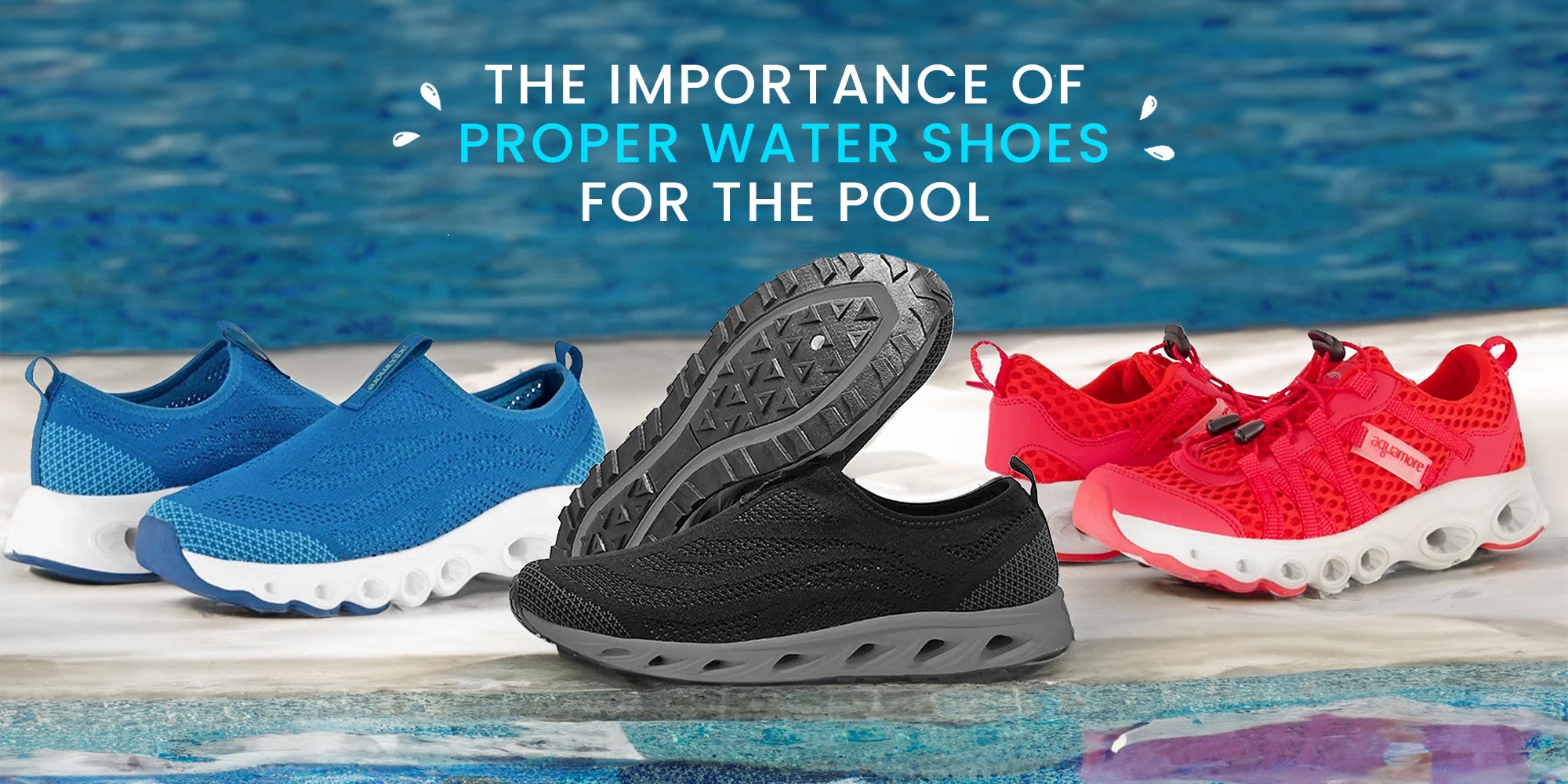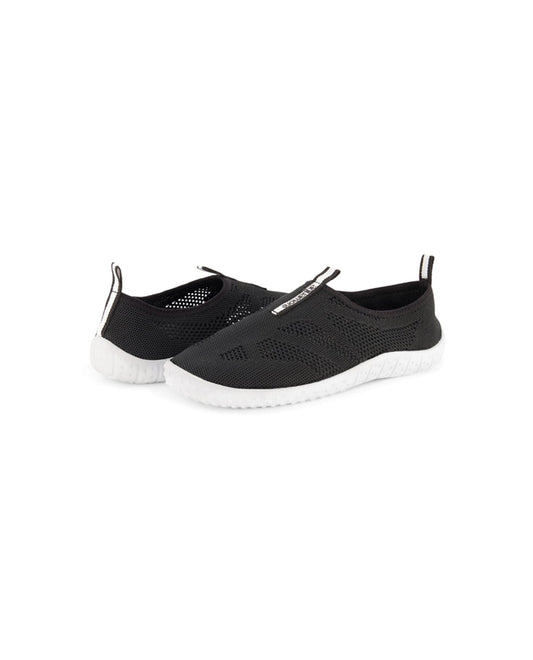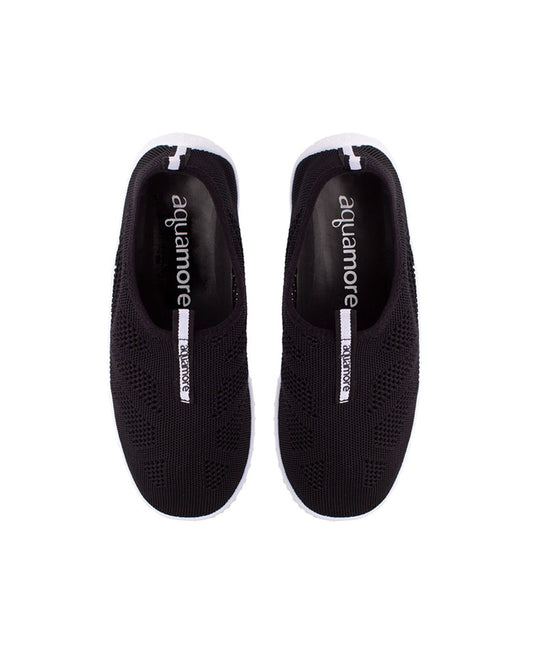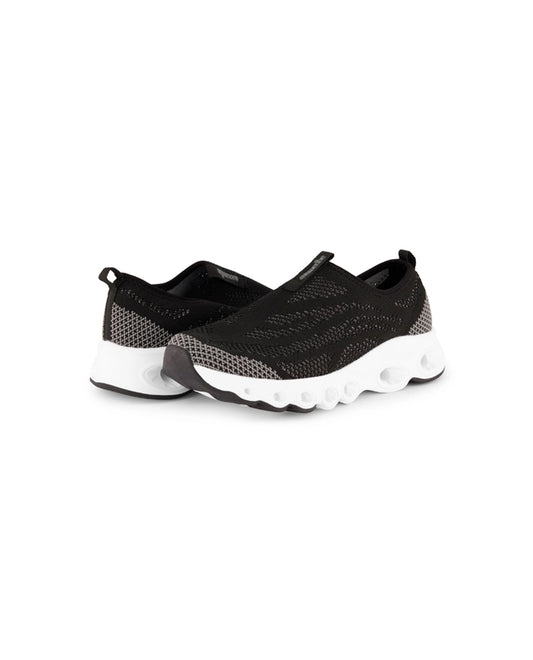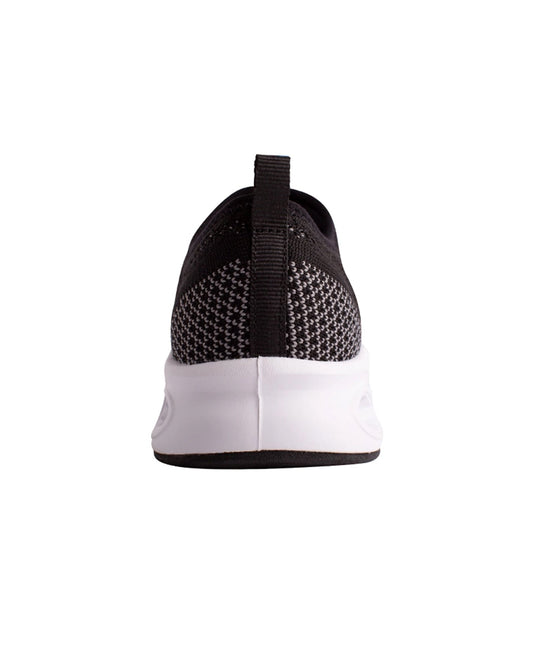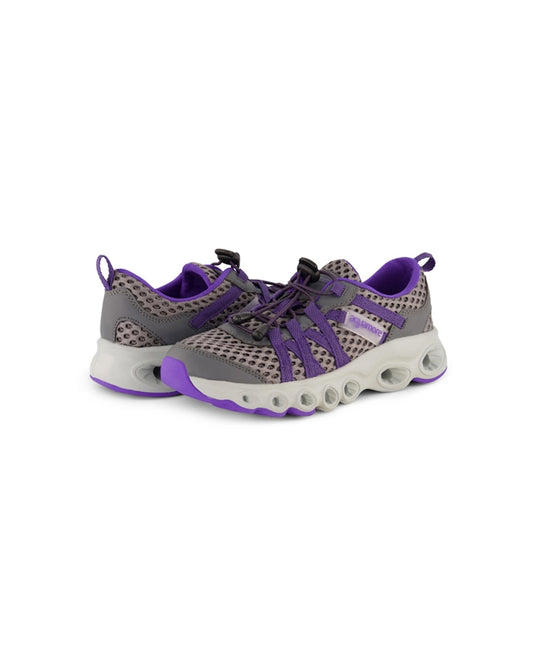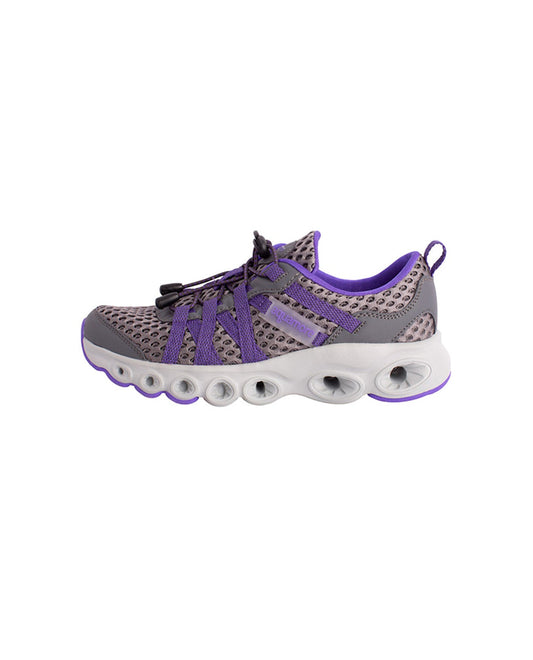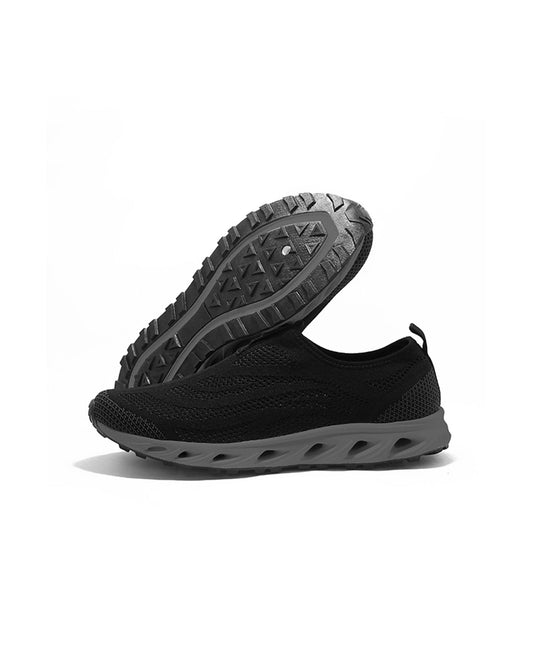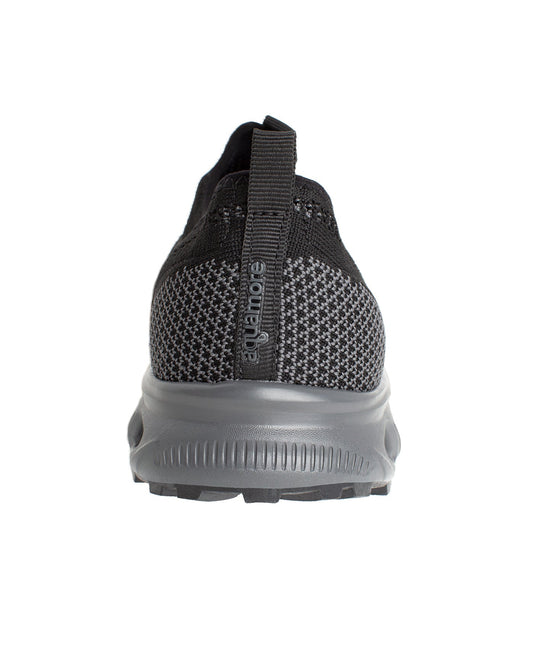While the pool may provide a safe environment to work out in, here are just a few reasons why you should still protect your feet with proper water shoes -- and what to look for in picking out your next pair!
Humans are used to wearing shoes on their feet. When working out in the pool, the buoyancy of water helps to support the body, but can also suspend the body without conscious effort against the resistance of the water. Those who are new to water exercise may remain on their toes during a water workout if they don’t wear shoes which naturally help to weight the heel and maintain a foot connection with the pool floor. This causes the participant to be in a constant state of plantar flexion which can lead to leg cramps and tight toes. Therefore, wearing supportive water shoes can be critical to maintaining proper foot position during your workout, as well as preventing slips and falls, reducing impact on the joints, added traction, and even help increase the intensity of your workout by providing increased resistance. Read on to learn more!
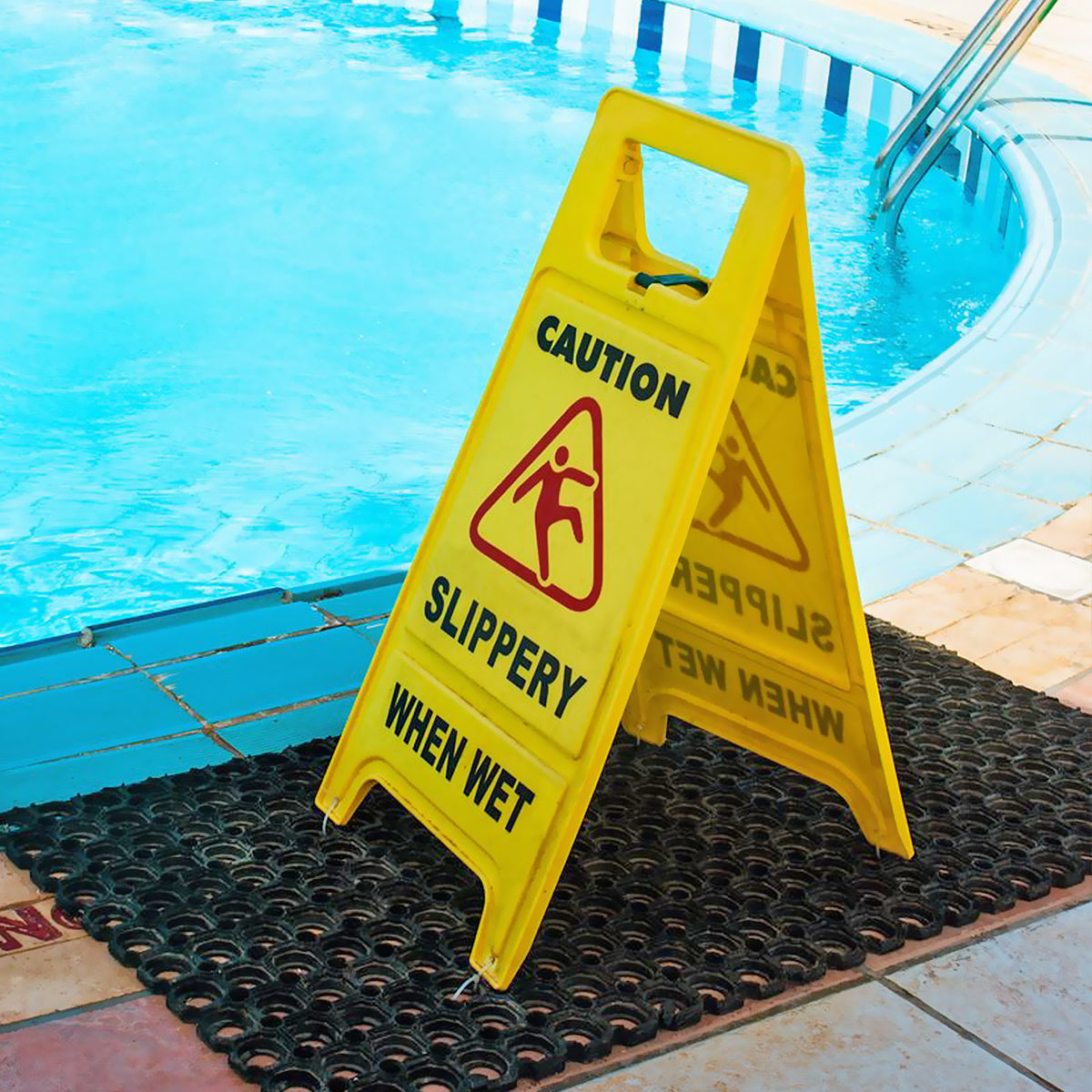

PROTECTS AGAINST SLIPS AND FALLS
“Slippery when wet” doesn’t just apply to the pool deck. Anyone who’s performed a Level II Cross-Country in shallow water knows a smooth pool floor can give your feet the perfect slip-n-slide surface to glide over. But it also means that even underwater you can still unintentionally find yourself mis-stepping on the wrong side of your foot, resulting in loss of balance and even injury. Look for shoes with rubber soles designed to prevent slipping both in and when you exit the pool.
PROVIDES TRACTION WHEN TRAVELING
Water shoes also assist by creating a better footing for both grounded moves as well as exercises involving travel in the water. Movement patterns sometimes require quick turns or changes in direction. Traction created by the water shoe will allow your feet to grip the floor better and can improve both your reaction time and promote proper form.
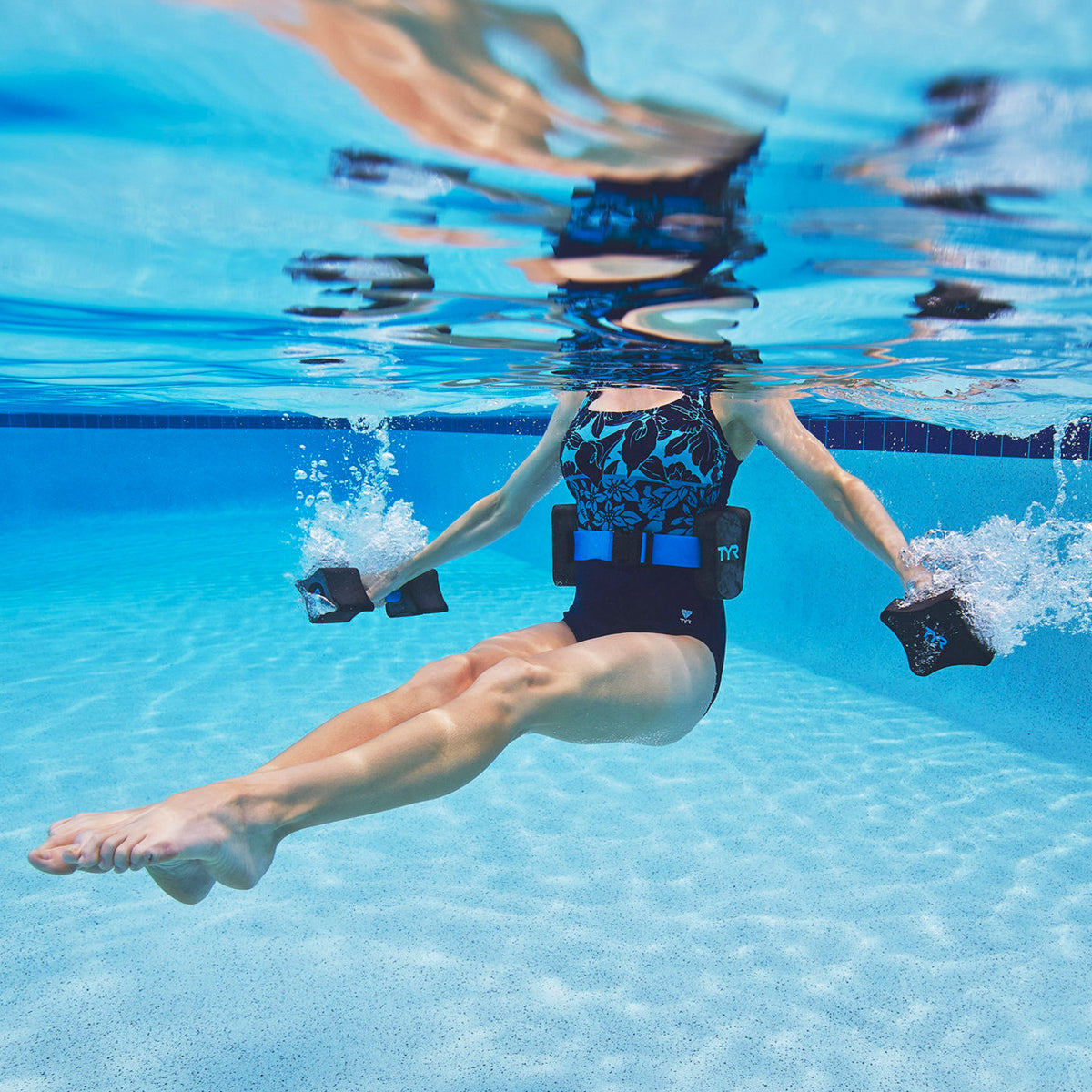

REDUCES IMPACT ON WEIGHT BEARING JOINTS
Though aquatic fitness prides itself on offering a low-impact alternative to land workouts, it cannot eliminate all stress on your weight bearing joints. In fact, many shallow-water exercises require both your feet to touch down on the pool floor, while some even include tapping the surrounding pool walls gently with the soles. This is one reason that the AEA recommends water shoes for individuals with special considerations like diabetes and musculoskeletal disorders.
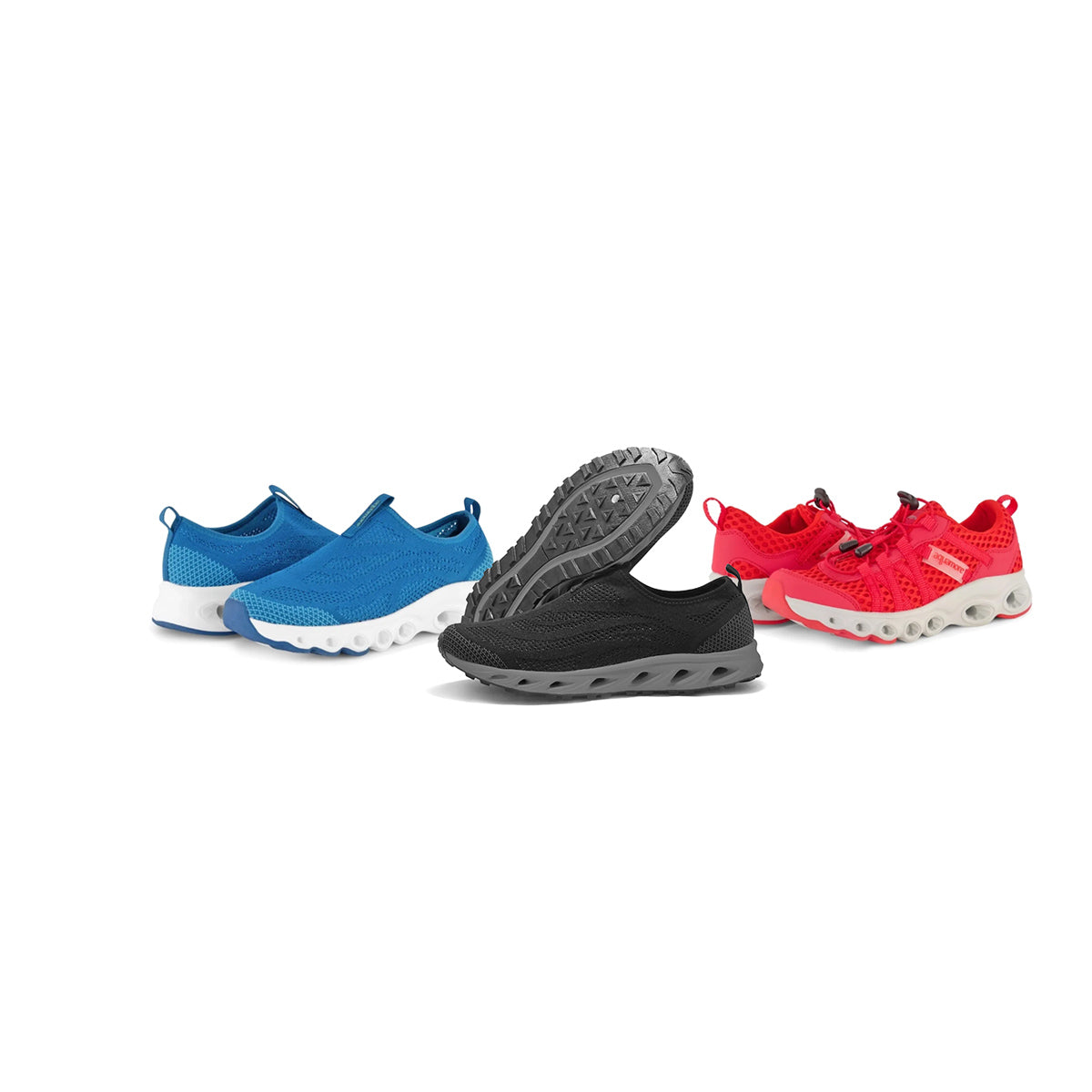
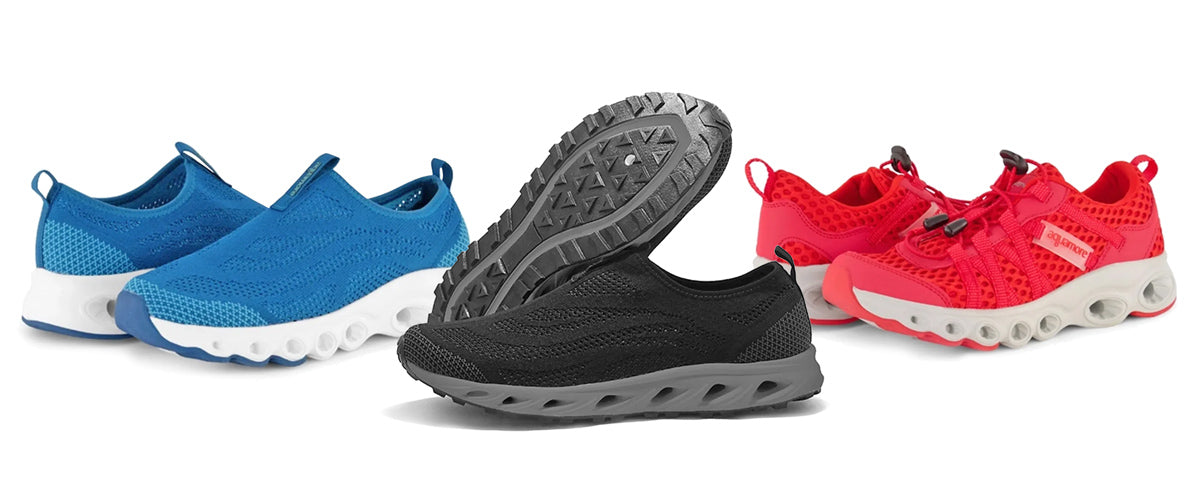
INCREASES INTENSITY OF WORKOUT
Though it may not be the intended purpose, some shoes may actually enhance your water workout by increasing the intensity. Designed to be light and comfortable on your feet, certain shoes may also provide additional weight to the legs. This is especially true in deep-water where water shoes may actually assist in maintaining correct vertical alignment.
It should be noted that certain water shoes may hamper the full range of motion at the ankle, however, in particular during plantar flexion. For this reason, if you are moving between shallow and deep-water exercises, you may want to find a water shoe that allows for easy removal without having to exit the pool.
So now that you know why you need them, here’s what to look for when investing in your next pair of water shoes:
Ideally, you’ll want a shoe with strong, sturdy rubber soles to provide traction while also helping to absorb the impact of the hard pool floor. You also want to find a pair that are light-weight and comfortable, fitting your foot like a pair of jogging shoes. Be sure your pair is also designed to ventilate, preventing the retention of water during and after the workout. Not only will this allow your feet to breathe, it also makes drying them much easier. Plus, these days you can find attractive pairs of water shoes that will also look great with your swimsuit!
